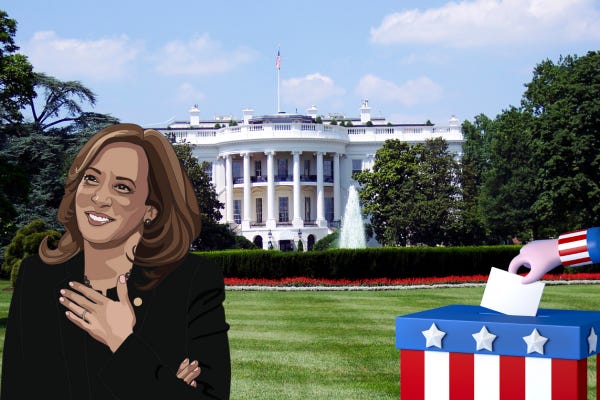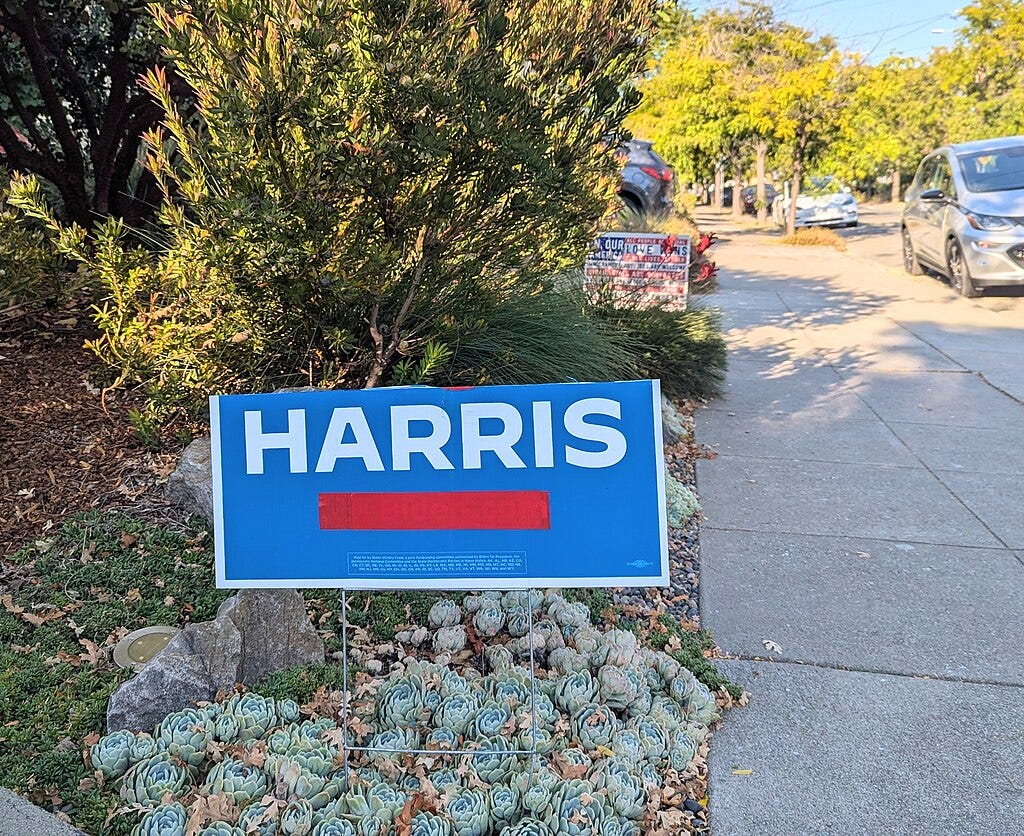Harris Enters the Race
What Could U.S. Foreign Policy Look Like Under a New Harris Administration?

U.S. Vice President Kamala Harris now looks set to secure the nomination early next month as the Democratic Party’s candidate in November’s U.S. presidential election after already securing more than enough support from party delegates. She has also attracted overwhelming support from her party and witnessed a rapid surge in donations to her emerging campaign which is set to be one of the shortest in recent history, given that November is now only a few months away.
Suddenly, the Democrats seem to have found their mojo, a new momentum that could turn around their ailing prospects up and down the ballot in this year’s election. Suddenly, America’s most important international allies in Europe, Asia, and further afield have cause for a new hope. An outward-looking America may continue for at least another four years. The Biden years may not turn out to be the inter-Trump years. A Trump restoration may not be inevitable.
Age and Equality
With the withdrawal of President Biden from the race, Americans now have a different choice at the top of the ticket, rather than face an uninspiring rerun of the 2020 campaign where the choice of two elderly white male candidates was not in any relative way reflective of American demographics.
What now appears to be on offer is a choice between an outward-looking Democrat policy platform, similar to that pursued by President Biden, but better placed to succeed now that a more youthful and energetic Harris leads it. Alternatively, voters can opt for the inward-looking Republican policy platform that seeks to build upon the nostalgic MAGA agenda that lost its reelection bid in 2020, led by an aging former President Trump who will turn 79 during the first year of a possible second term.
As I recently wrote, age had become the elephant in the room in this election campaign. With President Biden now bowing out of the race, the age issue may shift to the candidacy of Donald Trump. Trump’s age may now climb the list of considerations voters will assess in evaluating his suitability for a further four-year term. But for many American voters, so too will the newly emerged prospect of finally breaking the glass ceiling and electing the first woman to the nation’s highest office in its nearly 250-year-old history.

Just a week ago, this election campaign looked like it was going to be a referendum on Biden’s continuing ability to do the job, given his age and poor debate performance. However, that prospect could now be flipped on its head.
Age is quickly catching up with Trump. If he were to command a second term, he would be eight years older on day one than when he unexpectedly secured victory in 2016 by the smallest of margins. Moreover, he would be almost 83 years old upon leaving office. That would mean he would trump Biden by becoming the oldest president in U.S. history, upon concluding a second term. This is in contrast to Harris, who only turns 60 in October and would still be of typical working age when up for reelection in 2028.
A superpower of America’s size and capability has many interests to protect and threats to defend. It needs exceptional leadership and requires energy and focus from its Commander-in-Chief all day, seven days a week. If Biden was too old for a second term, Trump is also too old to occupy the White House again. The entrance of Harris shakes up the race.
American politics remains extremely polarized. This election will be won in the margins. The Electoral College vote matters more than the popular vote. Historically, candidates have sometimes won the most votes and still lost the election. That means some states matter more than others to secure victory. Small differences in campaign strategy at the margins can produce a national victory. So too can perceptions of what a candidate represents. In American elections, perception is so often reality. In effect, the Electoral College system means the future of America’s relationship with itself and the rest of the world may come down to satisfying a relatively small cohort of voters in key states.
The perception of undecided voters in battleground states such as Arizona, Michigan, Wisconsin, and Pennsylvania will most likely decide this year's election outcome. That means that this election could be decided by the candidate who better motivates and addresses the concerns of a relatively small number of votes in states such as these. The shake-up in the Democrat's campaign could yet prove the winning difference in this election year.
Recent polling shows that a desire for change is high in battleground states. Voter concerns about the economy, the cost of living, immigration, and public safety are crying out for affirmative solutions that address their root causes. There are also concerns about abortion rights. The candidate who wins these states will be the one who can convince these swing voters that they have their back. Many of these voters are women, who now have a chance to put equality on the ballot and elect the first female U.S. president in history to The White House to better protect their interests.
Just a week ago, the momentum seemed to be with Trump, the most energetic in a race that pitted him against President Biden. He had opened a lead against Biden in the key battleground states. However, candidate Harris now has the opportunity to go out front and turn things around. In the next few weeks, as new polling is conducted, we should be able to see if she can now move the needle and set a path to victory in the closing months of the campaign.
To successfully do so, she will need to be both the change candidate and the continuity candidate who brings a new hope, but also better explains to voters how the policies and achievements of the Biden administration, such as on industrial policy and infrastructure, will bring change. It's worth remembering the elephant in the room was Biden’s age and thus his ability to sell his policy platform, not the policy platform itself. In that sense, being both candidate Harris and Vice President Harris is an advantage rather than a risk.
Changing horses midstream enables the Democrats to better sell the party’s policy platform with fresh and energetic leadership. They now have a chance of a second look from some 2020 voters, who have started to drift away. Who Harris chooses to pick as her running mate could also prove pivotal. Moreover, this late reset in the campaign enables the Democrats to also tweak their policy platform to better appeal to swing voters and would-be voters, more broadly. That could also involve tweaks to foreign policy.


